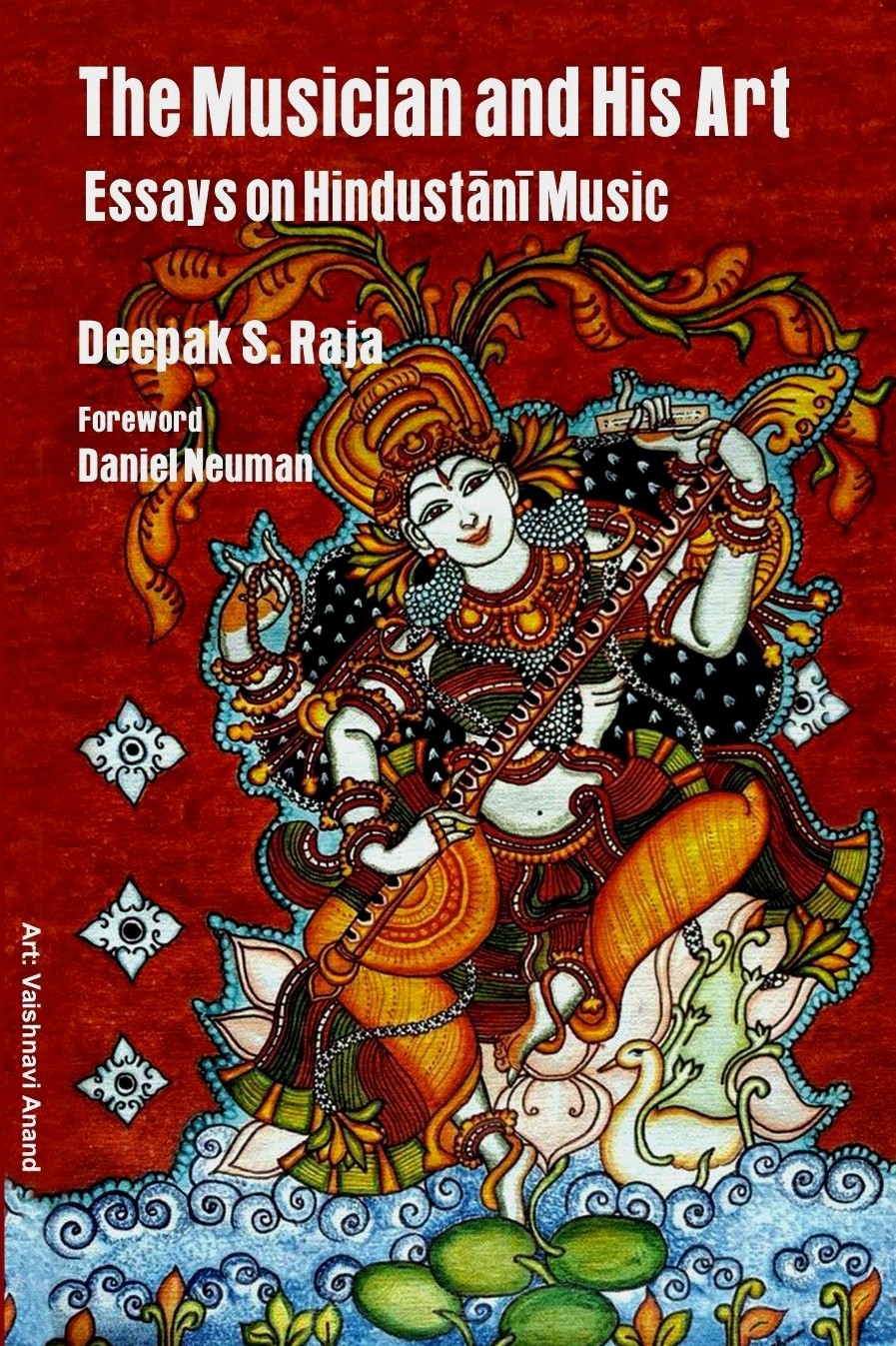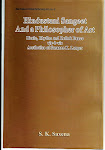How much Dhrupad is there in contemporary Dhrupad? Connoisseurs with a taste for such conundrums will find plenty of grist for their mill in the music of Indra Kishore Mishra. While the established Dhrupad lineages re-engineer the medieval genre as a global brand, Indra Kishore (Born: 1957) struggles for acceptance of a style zealously insulated against change for over three centuries in a remote corner of India. Combating geographic isolation and generations of oblivion, Indra Kishore has established himself, and his Bettiah gharana (stylistic lineage) of Dhrupad, on India’s musical map. The Indian Dhrupad “establishment” treats him with respect. But, the recent revival in the fortunes of the genre has, so far, left him relatively untouched. With the visibility gains from CDs published in the West, he may yet ensure the durability of his unique style.
Indra Kishore’s ancestors migrated from the Mughal court, in the 17th century, to the patronage of Bettiah (District Champaran in Bihar) on the India-Nepal border. The Bettiah aristocracy was committed to preserving traditional musical forms and modes of rendition. According to a leading scholar, the Bettiah Dhrupad lineage was originally the fountainhead of the Dhrupad tradition in the entire Eastern region of India, including Bengal.
When the princely family was dispossessed, Bettiah musicians had to pitch their art in the emerging marketplace against the more visible lineages – the Dagars and the Malliks/ Tiwaris of Darbhanga. Indra Kishore took up the challenge after his father, Mahant Mishra, waged only a half-hearted battle for recognition. While ascending the ladder of the profession, Indra Kishore also confronts the daunting task of making his anachronistic style acceptable to contemporary audiences.
The music of Indra Kishore Mishra
The observations here are based on attendance at concerts and a study of two CDs recorded by Indra Kishore for foreign recording companies. In 1994, Makar Records, a Paris-based recording company released his CD with raga Bageshri (Alap, Dhrupads in Chautal and Jhaptal, a Sulatal bandish and a Tarana in Adi tala) and raga Pancham (Alap and Chaturang in Tivratala). The other CD under review was recorded for India Archive Music, New York and features raga Chandrakauns (Alap, Dhrupad in Chautal, a Sulatal bandish, and a Tillana in Teental and raga Megh (Alap and Sulatal bandish).
The two CDs emphasise the centrality of the bandish-es to the musical ideology of the gharana. Each CD features the main raga with three and even four bandish-es. The variety in bandish-es deserves a remark. The two CDs feature bandish-es in Chautal, Jhaptal, Sulatal, Tivratal and even Teental. The repertoire includes a Tillana (Tarana), generally scoffed at by rival Dhrupad gharana-s because of its alleged association with dance, which was once considered an "inferior" art. Indra Kishore’s repertoire also includes a Chaturang, a rare compositional form, which combines four forms of articulation – poetry, percussion sound symbols, sargam, and meaningless consonants. The repertoire of the rival dhrupad gharanas seems, in comparison, restricted.
To have been the mainstream genre, Dhrupad would have needed, in its heyday, to be much richer in terms of variety than it now is. Like Khayal today, it could have embraced several minor genres, which shared its stylistic predilections, but differed in other ways. A good example of such genres is the Tillana/ Tarana, which has evidently remained a satellite to the mainstream genre through the Dhrupad as well as Khayal eras. It is therefore possible that Indra Kishore’s lineage preserved the variety, while others did not.
Where Dhrupad begins and where it ends is an irrelevant debate for the music lover. Indra Kishore need not be considered a specialist performer of the Dhrupad genre as currently understood by most people. He is a performer of medieval music. He sings several of the genres that his family has preserved for over three centuries. It just so happens that the currently identifiable Dhrupad was the mainstream genre three centuries ago, and is also the mainstay of his repertoire.
True to his medieval moorings, Indra Kishore’s treatment of raga -s is often archaic. His Megh is rendered to the Vrindavani Sarang scale, with twin-Ni usage, rather than the contemporary Madhmat Sarang scale with only Komal Ni. In Bageshri, he makes explicit use of the R-g-M phrase considered highly questionable in contemporary music. His use of Pa in Bageshri is more explicit than is currently advised. For the discerning listener, the dissonance caused by these issues is transient because of his firm grip over raga grammar. The average listener may, however, be confused by unfamiliar melodic contours. In some cases, the nomenclature of raga-s can also cause discomfort. The raga Indra Kishore calls Pancham is today better known as Bhinna Shadja or Kaushik Dhwani. The name “Pancham”, on the other hand, is today recognised either as the old name for the modern raga Hemant, or a rare and entirely dissimilar raga of the Marwa parent scale.
As a musical experience, Indra Kishore’s alap is radically different from Dagar and Darbhanga renditions. His alap conforms to the principle of steady escalation of melodic density and pulsation. But, unlike the popular Dhrupad styles, Indra Kishore’s alap does not follow the three-tier structure of vilambit, madhyalaya and drut alaps. His alap does not have a strictly anarhythmic prelude in vilambit laya. A subtle pulsation of melody is evident from the very beginning. As the alap progresses, the pulsation becomes more categorical and more brisk through several stages of escalation. Even at the highest level of swara-density, however, it does not match the density of the drut alap encountered in the Dagar tradition.
His alap is, in effect, a single piece of seamless pulsating melody, with a sthayi and an antara incorporated into each stage of escalation. The seamless quality is enhanced by the omission of the Mohra, a signatory phrase of the raga conventionally rendered as a separator between the various stages of alap presentation in the Dhrupad tradition.
The melodic treatment of his alap is also interestingly unfamiliar. Although it features the “nom -tom” articulation commonly found in Dhrupad alaps, the melodic contours he defines have a lyrical quality strongly suggestive of a song being sung, but with the poetic element missing. This seems to impart to his alap a story-telling intimacy, rich in emotional meaning. This feature suggests a possibility that the melodic component of the alap is actually assembled from fragments of bandish-es. Indra Kishore’s alap possibly harks back to the early days of Dhrupad as an art form. At that stage, before the alap evolved as an independently conceived solo movement, it may have relied on fragments of pre-composed Pada-s to satisfy the need for an abstract (improvised, tala-neutral and poetry-free) exposition of the raga form.
While the rival Dhrupad gharana-s frequently perform only two stanzas of traditional Dhrupad bandish-es, Indra Kishore’s bandish -es, in Chautal as well as Jhaptal, feature four stanzas – sthayi, antara, sanchari and abhog. Indra Kishore renders the four parts of the bandish strictly in sequence, several times over, with tremendous emotional involvement, but without any melodic or rhythmic improvisations. This poetry-based approach imbues his renditions with an emotionally charged quality, which is in contrast to the aloofness characteristic of bandish renditions in the rival gharanas of Dhrupad.
The ideological restriction on improvisations focuses musical/ creative energies on the communication of poetic meaning by preventing their diversion towards the cleverness of melodic-rhythmic design. This is why Indra Kishore’s bandish renditions have an endearing quality not encountered too often in familiar manifestations of Dhrupad.
The fast-tempo bandish-es in the minor tala-s, such as Sul or Tivra, or Adi, exhibit a greater sense of artistic freedom in rendition. He may either render them, like Dhrupad bandish-es, with just the repetitive iteration of the pre-composed form at a steadily increasing tempo, or decide to display his mastery over rhythmic improvisations. In these bandish-es, he makes generous use of tihais (a melodic-poetic phrase articulated thrice in a row to create a rhythmic impact), and dogun (enunciation of the bandish at twice the pre-composed pace) iterations, and more complex forms of layakari (play with rhythm). However, even at the fastest tempo, the poetic form is not allowed to degenerate into meaningless articulation.
Indra Kishore presents contemporary audiences with an unfamiliar model of music making within the Dhrupad genre. As music, it offers the entire range of aesthetic experiences from the devotional to the titillating. Despite its archaic features, his is a highly cultivated art. It is sparse on artifice and exploding with emotional energy. It comes straight from the heart and goes straight to the heart. This quality – perennially relevant to music --may have the potential to circumvent the obstacles to Indra Kishore’s success.
This, however, is an “Indian” viewpoint --discerning of musicianship per se, without genre-based preferences or prejudices, and accepting of stylistic diversity between lineages performing the same genre. Considering that Dhrupad’s constituency today is substantially outside India, such appreciation amongst Indians constitutes no assurance of success for Indra Kishore.
The genre that Western audiences recognize today as the “real” or “authentic” Dhrupad is no longer “Padashrita” (poetry -driven) and “Swarashrita” ( melody-driven) – as originally conceived – but Swarashrita and Layashrita (rhythm-driven). Dhrupad is, indeed, being globalized in order to service its trans-continental market.
Indra Kishore’s music, pegged to the poetic -melodic axis, is pitted against this reality. Notwithstanding his formidable musicianship and the richness of his repertoire, he remains on the fringes of the Dhrupad revival. If his style should drift into oblivion after him, Dhrupad will have lost some of the stylistic variety it still presents in a fast homogenising musical culture.
Deepak S Raja 2004
(c) India Archive Music, New York, producers of the finest recordings of Indra Kishore Mishra.











